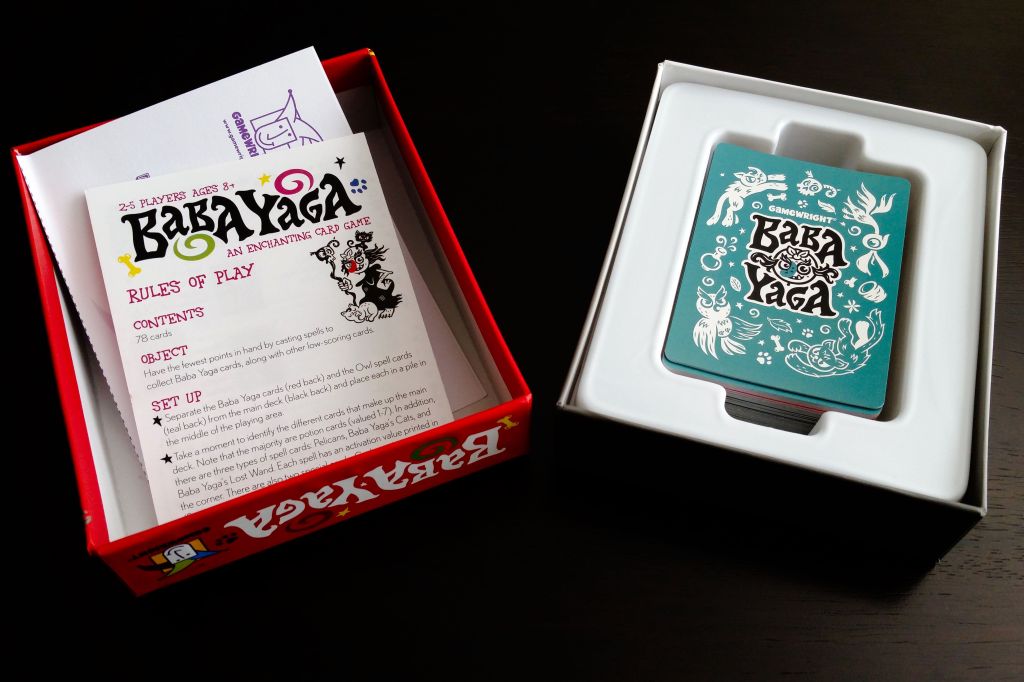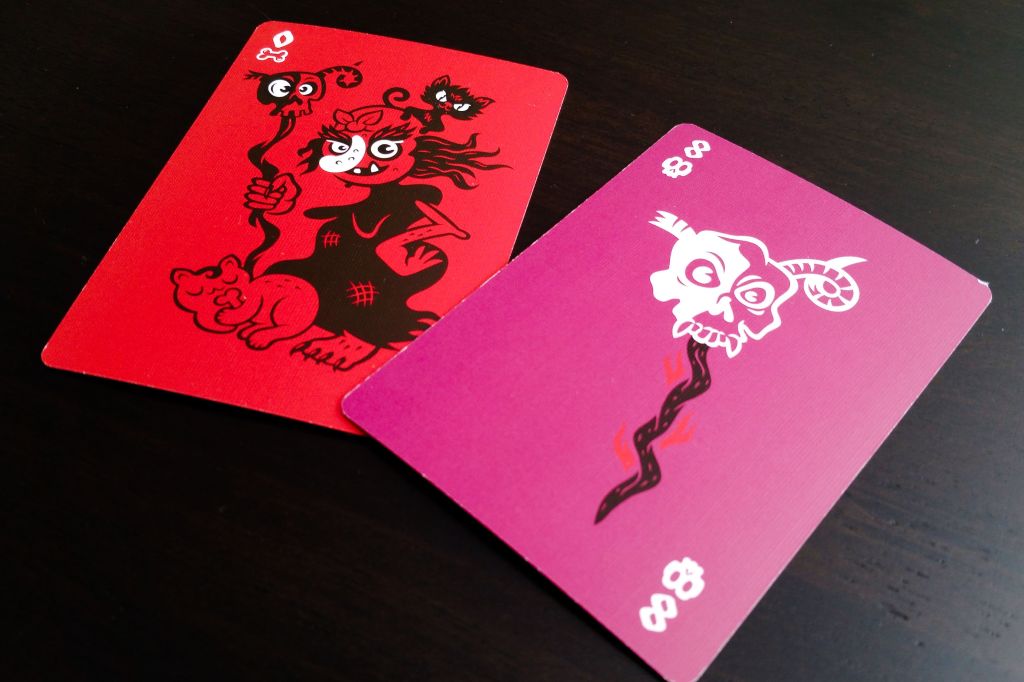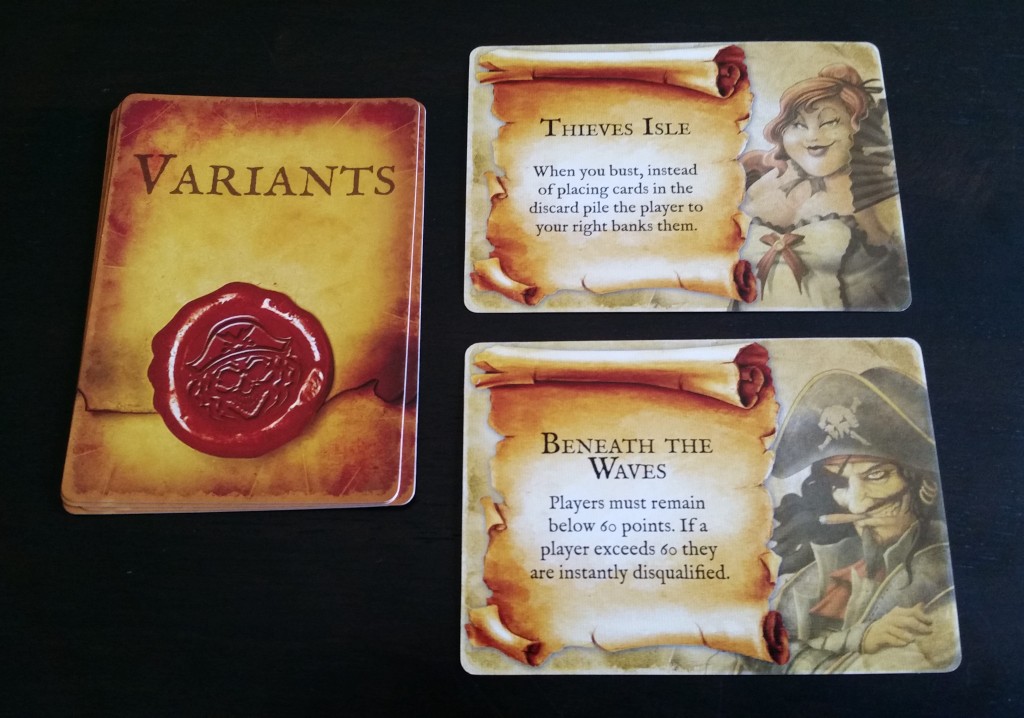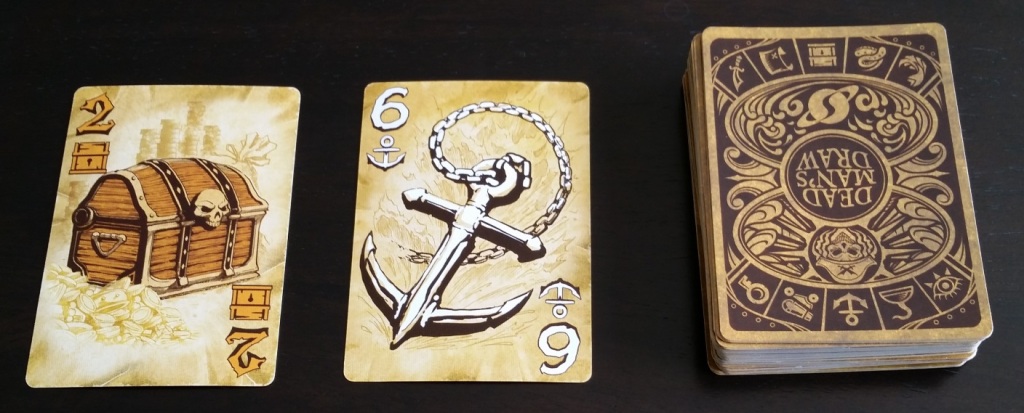As a child I had the original Connect 4. I distinctly recall the blue plastic frame with the feet that were impossible to get in and the bright yellow and red playing pieces.
I remember playing countless games with family and friends and really enjoying it. Somewhere along the way though the frame broke and the rest of it went to the great game cupboard in the sky. I never bothered to replace it as an adult, knowing that it wouldn’t have the same appeal now.
Even though I’d outgrown the original, I was intrigued when I saw that they had released a card based version of the game, and at $8 on sale I grabbed it. It doesn’t resemble the original game that much once you start playing it but that doesn’t mean it’s a bad game.
It comes in this little plastic case, shown below. There’s a whole range of these card games based on their famous big brothers and they all come in similar cases. I have a few and I’d expected the plastic clip to have broken by now but it’s held up pretty well. The sticker peels up at the edges though and at some point I’l either have to glue it down again or tear it off.

Inside the case is a set of mission cards and a set of tiles. The cards are quite flimsy and the tiles are the same thickness as the cards, not a nice solid cardboard like in Carcassonne or Cacao. There’s also a tiny rulebook. I would have liked a bit more quality but even at full price these are only around $20AU so you can’t expect too much.

To play, each player gets two mission cards and then takes turn laying out the tiles trying to make the pattern that matches their mission. if you complete a mission you take another and continue until someone has finished four of them.
The tiles either have a four coloured dots, a multi-coloured dot indicating that it’s a wild, a blank, or one of three action symbols – the plus allows you to play that tile over an existing one, the minus lets you remove a tile and the rotate symbol lets you spin an existing tile to help you complete your missions.

The mission cards are straightforward. You either get four of the same colour in a row like in the original game, going in any direction, or a square or L shape of four. If you completed a mission that the other player also has they get to claim it as well so you need to watch what they are trying to do and avoid finishing yours if it will give them the win.

Every game we’ve played has been really fast, under 10 minutes to complete four mission cards. There’s just enough strategy with taking the spots the other player needs or removing their tiles to make it competitive, and it’s actually a lot of fun.
You could teach it in a few minutes and the small packaging means it’s a good travel game. The rules say that if you want to make it more competitive you can play with the mission cards face up, so you can see what the other player is going for and block them, and that could be fun too.
The few things I don’t like are the low quality components, it would have been far nicer with thicker tiles, and I think there’s too may tiles with blanks and actions compared to the ones with just four coloured dots. Other than these minor complaints I’m happy with it for the price. I’ve only tried it with two players but we’ve probably played 10+ times given it’s over so quickly. It’s a decent filler game at a low price.















